Last time, we discussed Semmes’ escapades in the Sumter, which was a domestically manufactured privateer. The South had little capacity to manufacture modern ships, but the Confederate Secretary of the Navy, Stephen Mallory, was a forward-thinking individual. On May 9th, 1861, Mallory dispatched James Bulloch to England, with instructions to purchase or have constructed six commerce raiders.
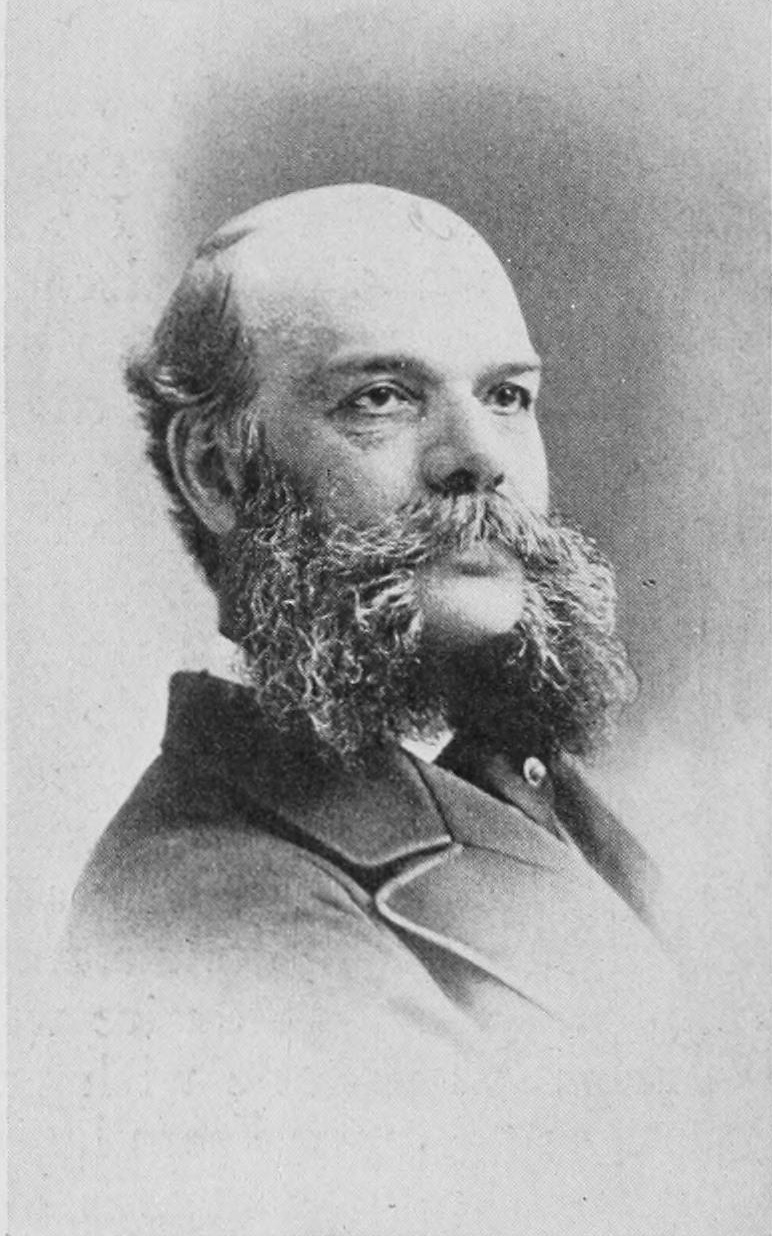
James Bulloch
Mallory had a good idea of what he wanted in these vessels: smaller, lightly-armed ships, “fast under both steam and canvas,” with the ability to operate for extended periods of time and to conduct operations without entering Confederate territory, if necessary. The Confederate Congress secretly approved this expedition (setting aside one million dollars for this end), along with approving the overseas construction of “one or two war steamers of the most modern and improved description, with a powerful armament and fully equipped for service.” Pursuant to that end, Mallory quickly sent Lieutenant James North to Europe to join Bulloch and procure ironclad vessels, suggesting six-gun frigates “that can receive without material injury the fire of the heaviest frigates…and whose guns, though few in number, with shell or hot shot, will enable them to destroy the wooden navy of our enemy.”
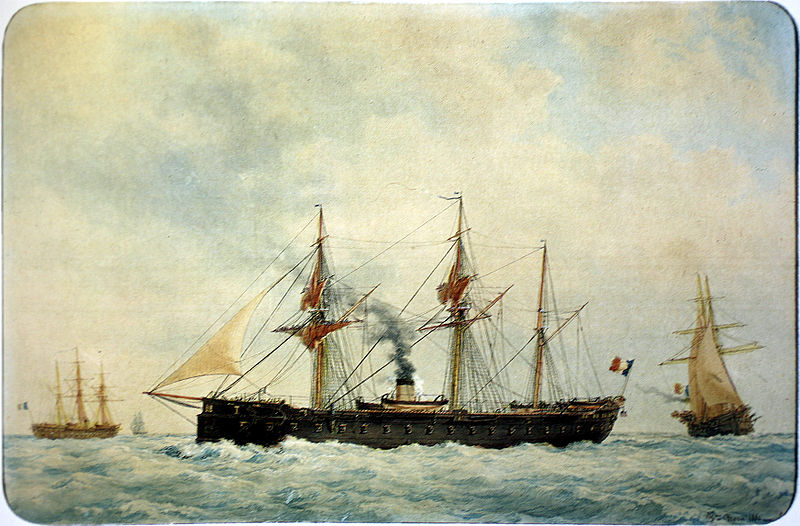
Malloy’s vision for these ironclads was different from the domestically produced Southern ironclads like the low-slung CSS Virginia. He recommended a design similar to the French frigate Gloire, the first seagoing ironclad, which was both well-armored and swift.1 Mallory thus pursued two different means to strike at the Union: first, through lightly-armed and independently-operating commerce raiders to break up Northern trade and secondly through superior technology and firepower, with which he hoped to directly break up the Northern blockade. Mallory hoped that the French and English, “as the purchasers of our cotton” would be induced to sell ironclad frigates. But if the purchases fell through recalcitrant, or the ironclad experiment did not ultimately allow Southern ironclads to “encounter with a fair prospect of success, their [the Union’s] entire Navy,” as Malloy hoped, then the purchase of commerce raiders gave Mallory an alternate means to strike at the Union.
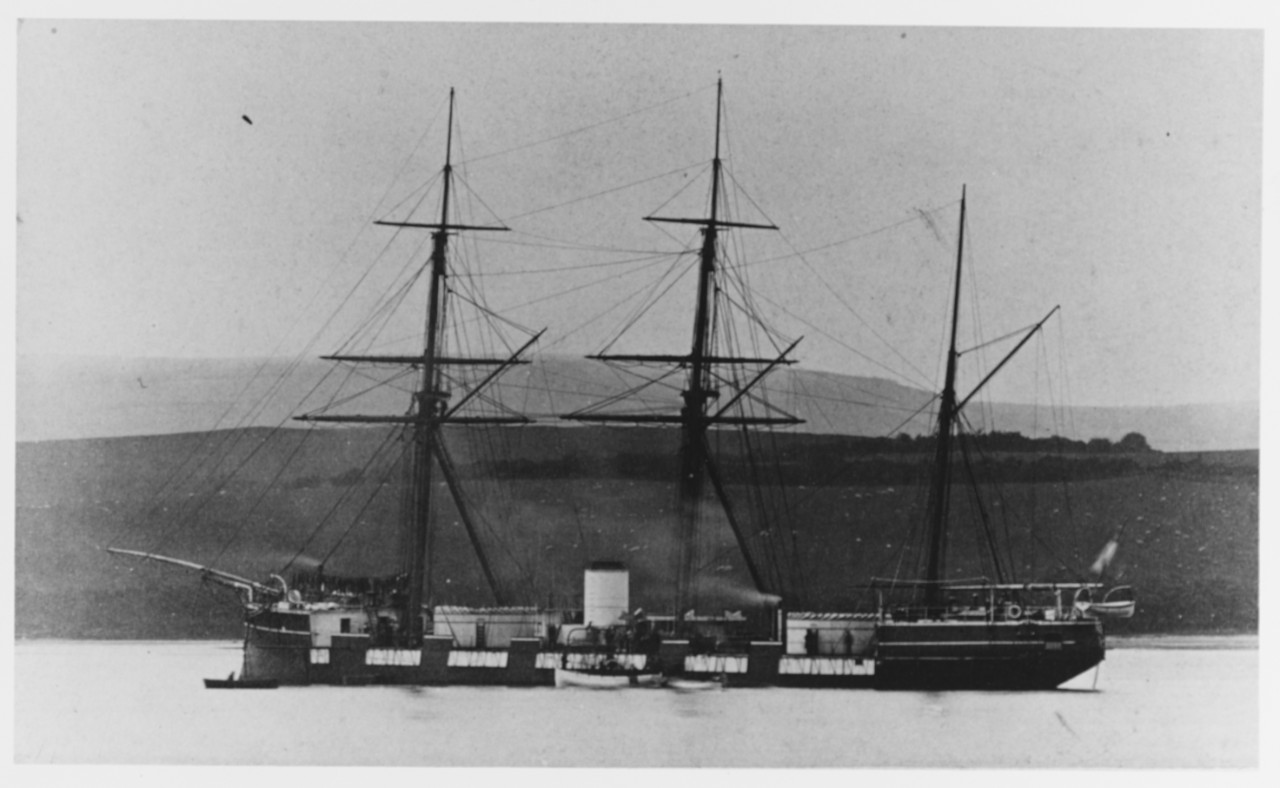
HMS Wivern, one of the Confederate ironclads
Mallory’s initial attempt to procure seagoing ironclads—which, at such an early date in the war, could have been truly devastating to the Union navy—was nearly successful. Bulloch drew up a contract with an English firm to build two rams, each carrying four guns in twin turrets and capable of speeds in excess of 10 knots. That Bulloch had contracted for the rams was no secret—he used his own name—and thus brought down a hail of Northern criticism. The project proceeded until the U.S. minister to England, Charles Francis Adams, threatened to go to war with England over the matter—at which point the British government, realizing it had overreached, put a stop to the construction.2
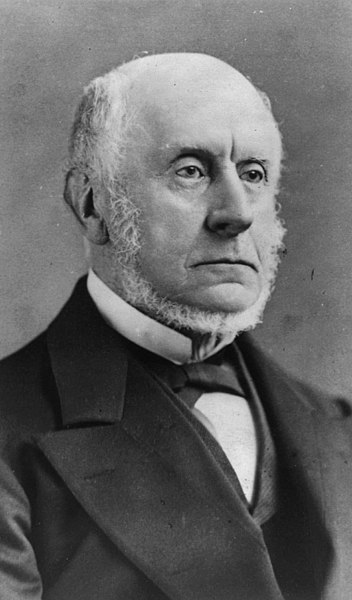
Charles Francis Adams, US Ambassador to Britain
Southern attempts to start a ship-building program in France fared even worse. The French proclamation of neutrality “forbade any French subject to co-operate in any manner whatever in the equipment or armament of a vessel-of-war or a privateer for either belligerent,” and, as Bulloch discovered, “French lawyers afterwards consulted were unanimous in the opinion that the Government would be bound to prevent any ship leaving France for the service of the Confederate States.” This, of course, foreclosed the acquisition of commerce raiders (to say nothing of an ironclad frigate like the Gloire)3 and caused Confederate agents to focus their efforts on shipbuilding in England, where “it was reasonable to expect more liberty of action.”
Bulloch’s attempt to overtly procure modern warships may have been blocked by Charles Francis Adams, but his English shipbuilding program continued, albeit with slightly more plausible deniability for the English. English neutrality law prohibited arming a ship that would attack a friendly power, but this narrow construction allowed Confederate agents to have whatever ship they needed built without its weapons, which could then be separately equipped once the ship left an English port.
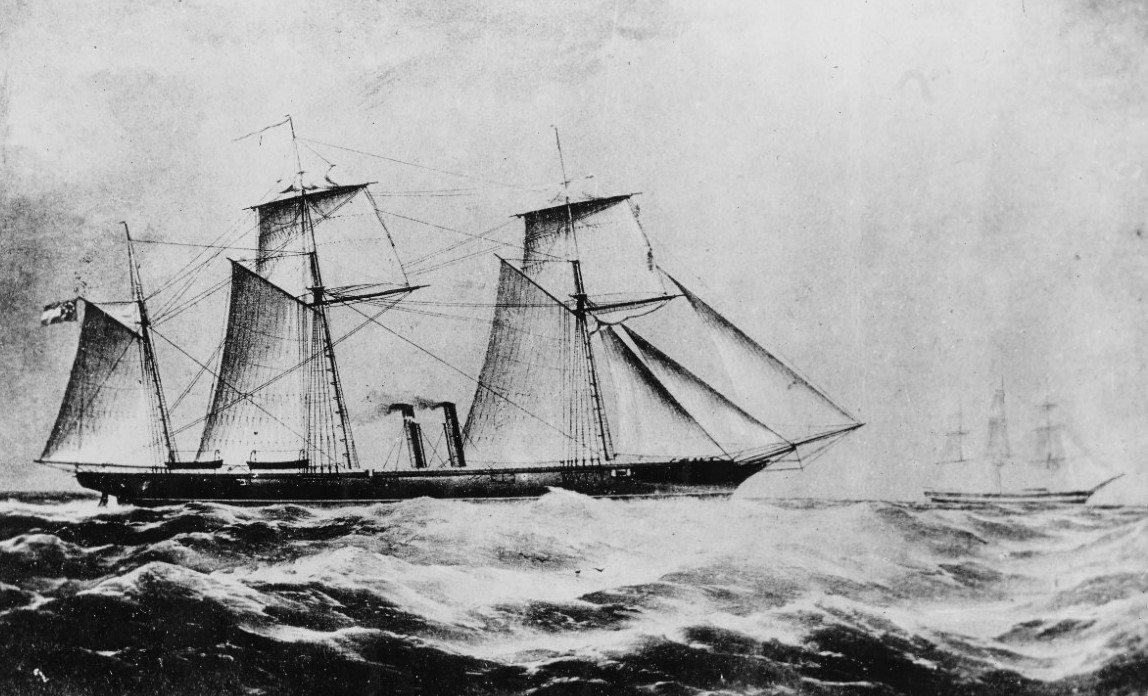
CSS Florida
The same spring that Semmes abandoned the Sumter, the ostensibly Italian vessel Oreto left Liverpool and sailed to the Bahamas, where—after being outfitted with her armament—she hoisted the Confederate flag as the Florida, the first of Bulloch’s foreign-built commerce-raiders. Unfortunately for the Confederacy, this “fine, fast little steamer,” as Bulloch referred to it, which was intended to “ply regularly between the West Indies and the Southern coast…to distract the blockaders” instead found itself running for Confederate territorial waters due to a nasty outbreak of yellow fever among the ship’s crew. Once again, a Confederate commerce raider would have to run the blockade, which it did in broad daylight on September 3, 1862, dashing between two blockading vessels at high speeds. Incredibly, although its crew was so debilitated they would have been unable to man a single cannon, they managed to successfully run the blockade, suffering only minor injuries from cannon fire.
The Union navy had suffered another embarrassment. Mallory’s commerce raiding program, although plagued with setbacks and consisting of only a handful of vessels, was already putting pressure on U.S. Secretary of the Navy Gideon Welles to redirect ships from the blockade to hunt down the raiders. We’ll discuss Welles’ response in our next installment.
1 bean: Gloire wasn't all that fast, particularly not compared to Warrior. ⇑
2 bean: These vessels were ultimately purchased by the RN as Scorpion and Wivern. They were the first turreted ships ever built that were intended to have seagoing performance instead of being limited to coastal missions, as evidenced by the presence of a forecastle and poop deck, as well as a sailing rig. Their design was heavily influenced by Cowper Coles, who invented their turrets and designed the tripod masts used. While neither of them actually sank, their freeboard of only 4'6" amidships was inadequate to work the guns in any serious sea. The risk of sharing HMS Captain's fate was reduced by the use of hinged bulwarks which could be folded down when the turrets were in action. Both ships spent only a few years in service before ending up on secondary duties, although Scorpion survived until 1901 and Wivern until 1922. They were not well-liked in service, as is usual for export-built ships. Also, they don't seem to have actually been designed for ramming, at least not to a degree unusual at the time. ⇑
3 bean: Another major issue with trying to buy ironclads in France was that the French shipbuilding industry was strained to the limit to build ironclads for France and Italy. All exported ironclads came from Britain for quite some time. ⇑

Comments
That seems like a really excellent way for the US to deliver the Confederacy what it most of all desired: Recognition, and even intervention, by a European Great Power. What was Adams thinking, to make such a threat? And why did the British government back down? Sure, the US was a major regional power but this is something close to the height of the British Empire. Was it just a question of making them realise they were breaking their own neutrality rules? Or was there some other consideration?
I suppose the British ministers could reasonably have wanted not to spend huge sums on fighting a war over six damn privateers, but I'd have thought they'd be a bit more invested in their reputation for not backing down to threats by random former colonies.
Maybe the British government was looking for a fig leaf to placate their abolitionist elements? IIRC by this point the RN was heavily involved in suppressing the transatlantic slave trade because of domestic political pressure
I suspect it was essentially a case of making it clear that "hey, this thing you're doing is big, please don't do that". It's not worth going to war over this minuscule order for ships, particularly when yes, you're going to upset the abolitionists in Britain. There's also the French to consider. They were seen as a major threat at the time, and if the British went to war over this, there's no guarantee that their old enemy wouldn't join in the fun. And some of it was undoubtedly that the laws of war were taken a lot more seriously back then, so violation of duty as a neutral was actually a big deal.
The trade aspect is important too. The confederacy liked to talk about “king cotton”, but large-scale cotton cultivation in India was just taking off. While the Indian cotton was lower quality than the American variety, it would keep Britain’s textile industry running. Britain also imported large amounts of corn and wheat from the North, and a war would have cut off that supply. Another thing that kept Britain from being too bellicose toward the Union was the enormous casualty numbers. At Antietam, each side took over 10,000 casualties in one day. Yes, Britain could have won a war with the North, but it would have hurt Britain a lot, even without other European powers taking the opportunity to nibble at British colonies. The Confederacy also was kind of terrible at public relations. Slavery didn’t help, but the Confederacy basically tried to blackmail Britain and France by refusing to ship cotton through the blockade even in the early part of the war when the blockade was ineffective. The intent was to demonstrate how dependent France and Britain were on Southern cotton, but it mostly just annoyed the Europeans.
I definitely agree with the "it's not worth even a silly, stupid war over the question of 'should our shipyard be allowed to bend our own neutrality laws to help the South?'"
But it's also worth pointing out, I think, that if the North had actually gone to war with England, it probably could have hurt England very badly. Launching an invasion of Canada and launching an arbitrarily large number of commerce raiders against the British shipping empire are two things I can think of off the top of my head that the North could probably have accomplished without really giving the Confederacy anything they could have used to stave off the inevitable. I don't know how well equipped Canada was to repulse an invasion, but given how much trouble the South gave the Union with its ramshackle commerce raiding program I suspect a real commerce-raiding effort would have been a huge headache.
To be fair, the Union might have had (more) domestic political trouble with an expansion of the war – although I would think Northern resolve might actually have risen if England had entered the fight. But England had little to gain by going to war with the States, and a lot (of shipping) to lose.
Another thing for Britain to worry about, is that an expensive war in America would leave Europe without adult supervision for several years. That is probably enough of a free hand for Russia to conquer and fortify the Sea of Marmara. Even bogged down in Mexico, France is probably more than capable of making trouble of its own.
Random aside, but I am trying to clean out some books and am willing to let go three naval Civil War books.
-Raimondo Luraghi's A History of the Confederate Navy
-Chester G. Hearn's Admiral David Glasgow Farragut and Admiral David Dixon Porter both.
Any interest?
On the subject of why the Brits gave in to the US' demands: a few things worth remembering include that Britain had already learned twice (once within living memory that they could not defeat the US well-enough to force a positive outcome, and while the Civil War would have helped the odds significantly, it was still quite the challenge. IIRC, after the Trent Affair, the Brits actually did go through and do an inspection of their forces in Canada, and the results were pretty woeful, so rather than risk losing Canada they decided to play it cool (because as Suvorov notes, cotton was one thing, but wheat and corn were another).
Also relevant was the fact of the one European power who openly supported the North: Russia. Going to war against the US would risked renewing the war with them.
Probably some really fun rabbit holes you can go down of playing it out all the scenarios if Britain does get involved (up to and including "WW1 happens in the 1860s").
I tracked down the full text of Adams's note, and it seems consistent with Bean's interpretation of the exchange. My read of the note is basically "Our nation is at war, your shipyards are arming our enemies, and your government isn't doing anything about it. No self-respecting government can stand for this sort of thing. I'm breaking off further discussions on this subject pending instructions from my government." There's also a line in there about how Britain would react on the receiving end of a parallel situation, which seems like it was intended to suggest that Britain should be concerned about the precedents the Laird Rams could set.
https://books.google.com/books?id=ldoAAAAYAAJ&pg=PA408&lpg=PA408&dq=It+would+be+superfluous+in+me+to+point+out+to+your+Lordship+that+this+is+war.&source=bl&ots=1-hJ7X61xt&sig=ACfU3U2MVA3IOsYdGHz7Sv2tE-rziEq5g&hl=en&sa=X&ved=2ahUKEwi0z_nhusTvAhWzTTABHXbnAk04ChDoATACegQIAhAD#v=onepage&q=It%20would%20be%20superfluous%20in%20me%20to%20point%20out%20to%20your%20Lordship%20that%20this%20is%20war.&f=false
The precedent-based warning is a particularly astute move, if it was intentional, since I've heard elsewhere that Britain made a point of tolerating the Union's very broad interpretation of the rules of war concerning blockades and neutral shipping specifically for the purpose of setting precedents that would be likely be convenient to Britain in the future. In particular, the Doctrine of Continuous Voyage argued that a neutral ship carrying contraband eventually destined for a blockaded port could be stopped and searched at any point on its itinerary. The Union used this argument in the Civil War to justify intercepting British-flagged merchant ships carrying contraband to Bermuda, where the cargo would have been transferred over to Confederate blockade runners. The precedent indeed proved very useful to Britain in World War I, where the Doctrine of Continuous Voyage was a critical part of making an effective distant blockade of Germany possible.
Oops, wrong link. This is the right one.
@Eric
British doctrine was for a close blockade up until about 1912, so I doubt they were laying the foundations for exactly what they did in WWI that far back. That said, blockade has been part of British doctrine for centuries, and they were definitely in favor of expanding its power.
Were these the two capital ships that Britain had left after the battle of Hampton Roads, were they?
I vaguely remember something like the Times reporting the story of the battle, and how the ironclads were able to walk through several wooden ships without slowing down, and pointed out that this meant that the entire british navy were now just targets.
No, that would probably have been Warrior and Black Prince, both far more capable that Monitor and Virginia.
To expand on that slightly, the answer is that British fears about the American ironclads were entirely overblown. Neither vessel was suitable for more than coastal work, as Monitor herself graphically demonstrated. For that matter, neither had sails, so even if you put a heroic seaman in command, you still weren't getting very far. And Warrior's main armament was 68 pdrs, which actually had a reasonable armor-piercing capability. (AIUI, American gunnery was based around larger, slower-moving projectiles. Which isn't great if you're trying to punch through armor, and explains why the two ships weren't able to harm each other.)
Military procurement by "take this big sack of cash and come back with weapons" may have mixed results, but at least it's always interesting.
Monitor and Virginia both had guns that might have been capable of piercing each other’s armor if they had been better equipped. Virginia had only explosive shells for her 7” and 6.4” rifles, and solid shot might have been able to penetrate Monitor’s armor. Monitor, on the other hand, was using the standard 15lb powder charge for her 11” smoothbores, though John Ericsson had recommended double charges to defeat another ironclad, and testing ashore had shown that the guns were probably safe with a 30lb powder charge. Later tests against armor showed that an 11” firing solid shot (which Monitor had) on a 30lb charge would have gone clean through Virginia’s armor at the close ranges of the engagement.
I remembered reading that somewhere, but I don't have an easy source. My library on Civil War ironclads is essentially nonexistent, as it's just not a subject I'm interested in. The footnotes here came from works on British battleships.
Source on ammunition: Ivan Musicant, Divided Waters. P171 for Virginia shells, p173 for Monitor powder charges. In the course of finding this, I found that Monitor was actually using 7.5lb half-charges due to an explosion of a different kind of gun on USS Princeton 18 years earlier.
Divided Waters is a good source on the naval side of the Civil War in general. It focuses more on operations than the design of ironclads.
Hmm. I have a couple of Musicant's other books, and he does good work. That might go on my list if I decide to look more at the Civil War.